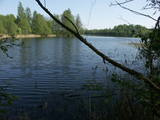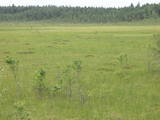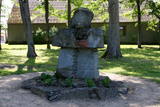| Nr | Name | Beschreibung |
|---|---|---|
|
Pamatīgs trīsstāvu koka tornis, no kura atklājas viens no labākajiem Matsalu līča un tā apkaimes palieņu pļavu skatiem, kuras apsaimnieko mājlopi, veidodami piemērotu vidi dažādām putnu un augu sugām. Laba migrējošo zosveidīgo putnu vērošanas vieta. Tā kā tornis ietilpst Tūlingu (Tuulingu) saimniecības teritorijā – spēkrats ir jāatstāj netālu esošajā autostāvlaukumā, bet suņi jāved piesieti kakla siksnā. |
||
|
Meklējama Skaistkalnes dienviddaļā, Mēmeles labajā krastā, Skolas ielā 5. Vietvārds Šēnberga tulkojums no vācu valodas nozīmē „Skaistais kalns”. No sarkanajiem ķieģeļiem celtā divstāvu muižas pils (historisma stils) tapusi ap 1894. g. (arhitekts Pauls Makss Berči). Ēkā ir saglabājušies dekoratīvās apdares elementi un iespaidīgs kamīns (vienīgais tāds Latvijā), uz kura atainota dzimtbūšanas atcelšanu Latvijā. Kamīnzālē atrodas pirms četriem gadiem atjaunotais griestu plafons. Muižas pilī atrodas Skaistkalnes vidusskola. Muižu ietver parks, kurā atrodas citas ar muižu saistītās ēkas. |
||
|
Der älteste und größte Kurort Litauens (seit 1794). Mikroklima (Luft der Umgebungswälder), salzhaltigee Quellen, Heilschlamm. Die Altstadt ist ein städtebauliches Denkmal. |
||
|
Dabas parks, kura lielāko daļu aizņem neprastās formas un līčiem bagātais Cārmaņa (arī Cārmins) ezers. Ezera ūdens ir ļoti tīrs, tādēļ tajā sastopamas Latvijai retas augu sabiedrības. Tā kā parka teritorijā nav tūristiem veidota infrastruktūra, interesenti var baudīt skatus, kas paveras uz ezera un tā apkārtni no Aulejas – Grāveru ceļa.
|
||
|
Eine Burgberg mit einer befestigten Vorburg wurde schon in 10 – 13 Jh. bewohnt. Am Fuße der Burg befand sich eine Stadt. In 1335 – 1347 hat der Livländische Orden auf dem Burgberg eine Steinburg aufgebaut, die im 18. Jh. vernichtet wurde. Ein Aussichtsplatz. |
||
|
Atrodas ciema ziemeļdaļā. Neliela vienstāvu ēka ar svaigi nomainītu jumtu. Pēc vieniem avotiem celta 1883. gadā, citiem – pamatakmens ielikts 1933. g. 1. maijā. Tā tapusi pēc vietējo iedzīvotāju ziedojumiem uz Pirču māju zemes (saimnieks zemi atdevis dievnama celtniecībai). Baznīcas iekārta 2. pasaules kara laikā gāja bojā, tādēļ mūsdienās redzamā ir tapusi 20. gs. otrajā pusē. |
||
|
Die Gastgeberin des Strandhauses Tahku organisiert Workshops zum Marinieren und Einlegen von Gurken. Dabei herrscht eine fröhliche Atmosphäre. Das Gurkenfest Tahkuranna findet jedes Jahr am 20. August statt. Man kann dort auch Gurkenkonserve, lokale Lebensmittelprodukte und Handwerkserzeugnisse kaufen sowie Handwerkserzeugnisse selbst herstellen. |
||
|
Atrodas vēsturiskā rātslaukuma dienvidu malā. Jaunā rātsnama celtniecība (itāļu renesanses stilā, arhitekts O. Dīce) tika pabeigta 1860. gadā. Iespaidīgo celtni, kas nulle kā atjaunota, ir vērts apskatīt gan no āra, gan iekšpuses. Ir restaurēts rātsnama pulkstenis, ārējā fasāde, iekšējie interjeri un Lielā zāle. |
||
|
Auf dem Land in Lettland und Litauen gibt es zahlreiche Bauernhöfe, wo von den Landwirten hochwertige Rohstoffe angebaut als auch Lebensmittel hergestellt werden. Im Laufe der Zeit sind die traditionellen Rezepte zur absoluten Perfektion gereift. Wegen des geringen Produktionsumfangs gelangen diese kulinarischen Spezialitäten selten in den Handel. Deswegen lohnt es sich, sich auf einer ländlichen Gourmetreise den Gaumenfreuden hinzugeben. Die Reise beginnt in Vilnius, von dort aus geht es nach Trakai, wo Sie im Ethnographisches Museum der Karäer die Nationalgerichte der ethnischen Minderheit - der Karäer - genießen können. Danach bietet das Museum einen Einblick in das litauische ländliche Leben vom 18. bis zum 20. Jahrhundert. Im Ethnographischen Museum in Rumšiškės. Wenn Sie durch Kaunas fahren, gelangen Sie zu einer Imkerei (Bienenwirtschaft). Dort können Sie nicht nur Honig und Wachskerzen kaufen, sondern auch Ihren Gaumen mit Honigbier verwöhnen. Auf dem Gutshof Pakruojis (Pakruojo Dvaras) können Sie sich in den Alltag der Gutsherren im 19.Jahrhundert hineinversetzen und im Restaurant die Speisen des Gutshofs genießen. Die Reise geht weiter zum Berg der Kreuze. Dort finden sich unzählige, von Besuchern aufgestellte, aufgehängte oder gelegte Kreuze. Damit wird der christliche Eifer zum Ausdruck gebracht. Danach kommt man zu einer Alpaka-Betrieb, wo diese ungewöhnlichen Tiere gefüttert werden können. Auch ein Foto mit den Tieren ist möglich. Zum Tagesausklang gibt es auf dem Bauernhof ein Abendessen mit traditionellen litauischen Gerichten. Die Route durch Lettland beginnt mit dem Besuch eines Bauernhofes, wo sieben Käsesorten hergestellt werden. Anschließend findet eine Verkostung statt. Auf dem Weg nach Tērvete gibt es ein historisches Museum und der Naturpark Tērvete. Nach der Besichtigung können die Lebensgeister mit einem guten Essen in einer Gaststätte aufgefrischt werden. Verwöhnen Sie sich mit leckerem Gebäck und Kuchen in der Landbäckerei . Nach der Wanderung durch die Stadt Jelgava gelangen Sie zu einem Bauernhof «Caunītes». Dort wird den Besuchern die Kunst des Brotbackens beigebracht. Sie können selbst Brot backen und den gebackenen Laib mitnehmen. Auf dem Weg nach Rīga können Sie noch in der «Ķiploku pasaule» (Welt des Knoblauchs) einkehren. Der lettische Knoblauch zeichnet sich durch ein besonders starkes Aroma und einen intensiven Geschmack aus. Die Landwirtin stellt ungewöhnliche Produkte mit Knoblauchzusatz her. |
||
|
This 1995 sculpture by Oļegs Skarainis is at the corner of Dinsberģa and Talsu streets in Dundaga, near the local dairy. It is dedicated to the strong men of the town, including former Dundaga resident Arvīds Blūmentāls (1925-2006), who lived in Australia, was a great crocodile hunter (some 10,000 in all), and served as a prototype for Paul Hogan in the famous movie “Crocodile Dundee.” |
||
|
Igaunijas jūras ūdeņos ir saskaitīta 1521 sala! Salu sarakstā pēc platības (63 ha) ~ 2,5 km garā Mohni sala ieņem 38. vietu. Lai saudzētu salas trauslo veģetāciju (vietām nedaudz atgādina krūmainu tundru), tās vidusdaļā ir izveidotas koka laipas. Salas dienviddaļā atrodas sašaurinājums, kuru tāpat kā blakus esošo jūras krastu klāj viens no savdabīgākajiem Igaunijas akmeņu laukiem. Salas ziemeļos esošās Mohni bākas (Mohni tuletorn) celtniecība pabeigta 1871. g. un tās gaisma ir redzama 10 jūras jūdžu attālumā. Šī ir viena no skaistākajām Ziemeļigaunijas bākām! Līdz Mohni salai var nokļūt ar laivu (iepriekšēja pieteikšanās) no ~ 5 km attālās Vīnistu ostas (Viinistu sadam). Ar jūras laivu vai kajaku piemērotos apstākļos būs ~ 1h ilgs brauciens. Jārēķinās, ka uz salas nav pastāvīgo iedzīvotāju! Vīnistu ciemā apskatāms 2002. g. izveidotais Vīnistu mākslas muzejs (Viinistu kunstimuuseum). Apmeklētājus iespaidos ne tikai tā āriene, bet arī tapšanas vēsture. |
||
|
Operdziedātāja Jāņa Zābera muzejs "Vecais ceplis" atklāts 1973. gada 11. augustā - dziedātāja dzimšanas dienā - viņa dzimtajās mājās. Muzejā apskatāmas fotogrāfijas no viņa dzīves gājuma, afišas un operu tērpi. Tāpat pieejami dziesmu un operu āriju ieraksti mākslinieka izpildījumā. Muzeju pārzina Jāņa Zābera brāļa meita ar ģimeni. To ir iespējams apmeklēt, iepriekš saskaņojot laikus.
|
||
|
Meklējama Nīcgalē, starp Rīgas – Daugavpils šoseju (A 6) un Daugavas krastu. Baznīcu cēla (neogotikas stils) pēc muižnieka Henriha Plātera - Zīberga iniciatīvas 1862. - 1863. g., veltot to Jaunavas Marijas dzimšanai. Kā jau daudzas citas baznīcas, arī šī ēka un tās interjera priekšmeti cieta 1. pasaules kara laika notikumos. To atjaunoja 1922. gadā. Baznīcas iekārta ir saglabājusies no 19. gs. 60. gadiem, bet, centrālā altāra augšdaļu pārbūvēja 1957. gadā. Dažus gadus vēlāk - 1961. g. uzstādīja ērģeles. |
||
|
Atrodas Jūrmalciema austrumdaļā. Koka šķūnī sakrāti vietējo entuziastu savāktie Jūrmalciema iedzīvotāju sadzīves priekšmeti un amata rīki. Novadpētnieki te var uzzināt vērtīgu informāciju par ciema vēsturi un zvejnieku dzīvesveidu. |
||
|
Der erste Sieger im Bäckerwettbewerb bäckt Roggenbrot nach dem traditionellen Rezept, in dem er das in der Mühle Sangaste gemahlene grobe Roggenmehl benutzt. |
||
|
Dabas liegums veidots salīdzinoši neliela pārejas tipa purva aizsardzībai. Purvu lieliski var pārredzēt no nelielā skatu torņa.
|
||
|
Es befindet sich im Orstzentrum von Džūkste. Das 1990 errichtete Denkmal wurde ein Jahr später gesprengt. Das jetzige Denkmal wurde aus den Trümmern des Gesprengten erstellt. Es ist den gefallenen Soldaten der 19.Division der lettischen Legion der Weihnachtsschlacht 1944 gewidmet. |
||
|
Die Tour führt durch Nationalparks und Naturschutzgebiete von internationaler Bedeutung entlang der Küste. Unterwegs werden kleine reizvolle Städte, einige historische Sehenswürdigkeiten und traditionelle Dörfer besucht. Auf der Tour erkunden Sie seltene und geschützte Pflanzen und örtliche Traditionen, sowie genießen wunderbare Landschaften, die Wildnis und Einsamkeit. Im Nationalpark Kemeri gehen Sie auf einem Pfad im Moor, sehen wilde Wiesen und können einen Vogelbeobachtungsturm neben dem See Kanieris besteigen. Danach erkunden wir den Naturpark des Sees Engure, wo man 22 Orchideenarten finden kann. Am nächsten Tag führt die Tour Richtung den Nationalpark Slitere, der das ehemalige Gebiet des Baltischen Eisstausees und des Littorina Meeres ist. Sie besuchen den Kiefernpfad des Kaps von Kolka und den Pfad des Sees Peterezers, in dessen Landschaft man die Bildungsperioden der Ostsee sehen kann. Weiter führt die Tour zum Pfad des Moores Stikli, das das größte Moorgebiet in Lettland ist. In Uzava entdecken Sie die größte graue Düne in den baltischen Staaten und die wilden Ufer des Flusses Venta, aber danach – die reizvolle Stadt Kuldiga, die mit ihrer gut erhaltenen hölzernen Architektur und dem breitesten Wasserfall in Europa bekannt ist. Weiter führt die Tour durch das Urstromtal Abava, das von tauenden uralten Eismassen gebildet worden ist. In Sabile können Sie an dem berühmten Weinberg halten, der der nördlichste Weinberg der Welt ist, und an dem Pflanzenpfad von Sabile, aber weiter auf der Tour – an der größten Eiche in Europa. Auf dem Weg nach Riga unternehmen Sie eine Wanderung auf dem 5 km langen Pfad des Moores von Cena, das Nieder-, Hoch- und Übergangsmoore, sowie die dort waschenden Pflanzen charakterisieren. |
||
|
The owner of the Stāmeriena Estate was Baron Johann Gottlieb von Wolff, and his wife, Sofia Potyomkina, was a member of the Russian Orthodox faith, so work on the church began in 1902. It was consecrated two years later. The crosses on the steeple of the church are known for mountain crystals that were presented by the Wolff dynasty. Contact the church in advance for a tour of its interior. |
||
|
This farm is an apiary, with hives of bees gathering honey. The farm has won prizes for its products. You can take a tour and learn about the lives of bees and beekeeping products, make your own wax candles, or attend educational seminars. |
||






















